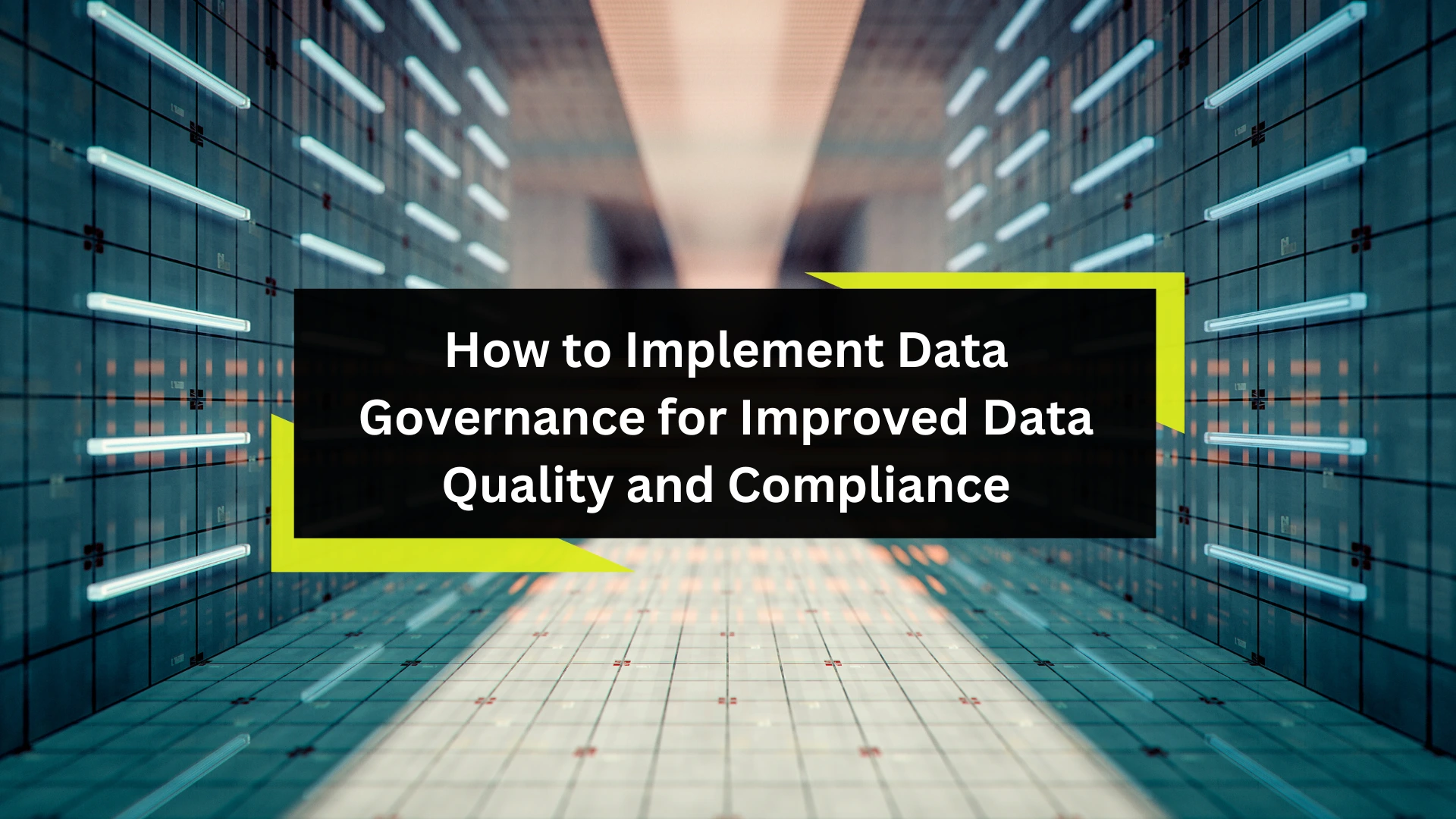How to Implement Data Governance for Improved Data Quality and Compliance

In an information-driven business environment, high-quality data requires effective data governance implementation to lead to compliance and security. This "How To" is all about walking you through the process of successful data governance implementation and bringing better quality and compliance to the organization.
Step 1: Assess Your Data Landscape:
Right before implementing data governance, review your data landscape. Understand what kind of data your organization collects; stores and then orchestrates. Know sources, ownership, and usage patterns. This forms an excellent foundation for implementing data governance.
•Define critical data elements: Determine the most important data elements for your organization's operations and compliance.
•Conduct a data quality assessment: Identify any existing data quality issues and prioritize their resolution.
Step 2: Define Data Governance Policies and Procedures:
Establish comprehensive data governance policies and procedures that outline roles and responsibilities, quality standards of data, privacy and security, controls over access to data, and data retention. Your policies must be relevant, aligned with the regulations, and current industry best practices.
•Involve stakeholders from different departments: Collaborate with legal, IT, and business teams to ensure comprehensive policies.
•Regularly update and review policies: Data governance should be an ongoing process, evolving with changing data landscapes and regulations.
Step 3: Establish Data Stewardship and Oversight:
Data stewardship governs data quality, compliance, and governance. Data stewards should be put in place to oversee all activities of management, enforce policies, align to issues of data, and ensure full integrity of data.
•Train and educate data stewards: Provide them with the necessary training and resources to fulfill their responsibilities effectively.
•Foster a data-driven culture: Encourage all employees to take ownership of data quality and compliance.
Step 4: Implement Data Management Tools and Technologies:
Invest in data management tools and technologies that facilitate data governance practices. These tools can assist with data profiling, metadata management, data cataloging, data lineage, and data quality monitoring.
•Select tools based on your organization's specific needs and scalability requirements.
•Integrate data management tools with existing systems for seamless data governance practices.
Step 5: Continuously Monitor and Improve Data Governance:
Data governance cannot be a one-time initiative. Continuously monitor data quality and compliance, as well as the efficiency of your data governance framework. Collect feedback from all stakeholders; identify which areas need improvement and make adjustments for continued maturity in data governance.
•Establish metrics and key performance indicators (KPIs) to measure the success of data governance initiatives.
•Leverage data governance as an opportunity for continuous improvement and better decision-making.
Implementing effective data governance is crucial to ensure data quality, compliance, and security in your organization. Follow these steps and leverage expert tips to strengthen your data governance practices and unlock the full potential of your data.
Conclusion
By implementing a robust data governance framework, your organization can achieve improved data quality, compliance with regulations, and enhanced confidence in data-driven decision-making. Embrace data governance as a strategic asset and lay the foundation for a successful data-driven future.

